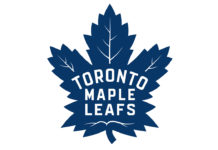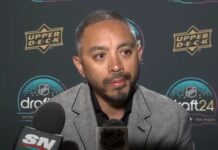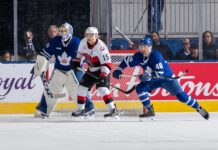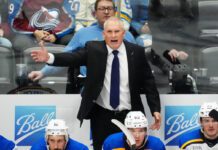As free agency inches closer, the Toronto Maple Leafs find themselves in a stalemate over the value of cap space with the Edmonton Oilers, who will be signing Zach Hyman on Wednesday.
This is not unfamiliar territory for the Leafs, save for the fact that they might actually salvage some value in return for Hyman prior to losing him.
If they don’t, Hyman will join a growing number of players who have walked out of the organization as UFAs for nothing in return in the five-year run where the Leafs have been eliminated in the first round every single season (note: technically, they lost out in the play-in round against Columbus — not the first round).
This growing list of players includes:
- Zach Hyman
- James van Riemsdyk
- Tyler Bozak
- Jake Gardiner
- Leo Komarov
- Tyson Barrie
- Cody Ceci
- Tomas Plekanec
- Brian Boyle
- Ron Hainsey
- Roman Polak
- Tyler Ennis
- Kyle Clifford
- Zach Bogosian (likely)
- David Rittich (likely)
- Riley Nash (likely)
- Ben Hutton (likely)
- Nick Foligno (likely)
Now, some of these are trade deadline acquisitions, so while it might not be the same as a long-tenured player walking for free, they are players the Leafs paid assets for, the team was promptly eliminated, and the players then walked for free.
Over the last five seasons, the Leafs spent the following draft picks on the acquisitions of Foligno, Boyle, Plekanec, Rittich, Hutton, Clifford, and Nash:
- 1 x 1st
- 2 x 2nd
- 2 x 3rd
- 1 x 4th
- 1 x 5th
- 1 x 6th
That’s an entire draft class, plus extra picks. The average number of games those players played for the Leafs? 13.
It should be noted that not every season is equal. The Leafs should have gone for it this past season. They finished first in a weak division with a clear path to a final-four appearance. The team didn’t get the job done. It was justifiable to pay up at the deadline, and it arguably would have been a fireable offense if Kyle Dubas was not active. Unfortunately, the players didn’t reward the management group, and now the Leafs are facing yet another offseason where several good players will walk for nothing in return.
It should also be noted that early on, fans were sold on the idea of the Leafs retaining their own players at the deadline in order to help the team make the playoffs, if for no other reason than gaining the young players experience. Let the record show that this was a fruitless exercise — the experience accomplished very little, if anything.
The Leafs have also struggled with their depth and integrating entry-level contracts into their roster over the last couple of seasons. Their lack of depth and cap space have become constant talking points. Sure, who they’ve actually drafted is absolutely a critical factor in why this is the case. But they’ve also left a number of assets on the table and/or actively paid up and lost assets in the process, which has created a situation where the management group constantly has to go out in free agency and attempt to beat the market.
As it stands, the Leafs need roughly three top-nine forwards, a third-pairing defenseman, and a 1b goalie. They have ~9 million in cap space to make it all work.
NHL teams lose players all the time in free agency – this is why there is a free agent frenzy each summer. It’s not like the Leafs are the only team in this situation, but they’ve shown absolutely no future planning in a five-year span at this point, and they have exactly zero playoff success to show for it.
This has to be acknowledged at some point. If a team keeps players and goes on a run, that’s great! If it keeps players and continually loses out in round one over and over again? The effects of this are inevitably going to be felt in time.
There were clear moves to be made, most of which were said at the time. JVR would have netted a big return. Tyler Bozak would have been a useful piece for another team (he proved that subsequently when he won a Cup with the Blues). Tyson Barrie was simply never a good fit, and he was relegated to a third-pairing role at playoff time (fetching something in return for him would have been better than nothing in that scenario). It was always unlikely Gardiner would return.
The Leafs were staring down the barrel at a Boston matchup followed by a Tampa Bay series in the playoffs (although Tampa actually lost to Columbus in 2019). It was difficult to foresee the Leafs advancing through their division and into the final four. This is to say nothing of all the draft capital the organization has sacrificed in order to acquire players at the trade deadline.
Presently, the Leafs can look at their roster to see a similar situation developing yet again.
Morgan Rielly has one year left on his contract before he’s eligible to enter the free-agent market. The market for defensemen is always strong, and of all the players the Leafs have seen walk away over the last few years, Rielly has the most value out of any of them. I don’t think it’s even close.
Rasmus Ristolainen, also with one year left on his deal and a much less successful career than Rielly’s to date, just netted the Sabres the 14th overall pick. The draft has come and gone for the Leafs, and Rielly is still on the team. There hasn’t been much reported in the way of contract negotiations.
On our podcast after the Leafs’ elimination from the playoffs, Elliotte Friedman noted that the Leafs will (likely) look to make a determination on Rielly one way or the other this offseason – meaning, either sign him long-term or trade him if an agreement is unlikely.
This is the only sensible approach at this point. Last offseason, there were no reports of a formal contract offer presented to Hyman. In March of this year, Luke Fox wrote at Sportsnet, “All reports say negotiations have not begun.” It’s possible that contract talks happened and nobody actually reported it, but to our knowledge, there was nothing ever made public about a formal offer at any point prior to the end of this season for a good player who is about to walk away for free.
Over a number of Kyle Dubas press conferences and media interviews in the past few days, this has not been a prominent topic, but the Leafs can’t let a player of this calibre simply finish out his contract and walk away for nothing (or for the team to find itself negotiating for a draft pick in a sign-and-trade in late June 2022).
It can’t happen again for a player of this stature. Rielly is only 27 (he’ll turn 28 next March). Over the past three seasons, only six defensemen have produced more points than the Leafs’ 2012 fifth-overall draft selection, who has played nearly 24 minutes per night. Still young enough, Rielly’s style of play doesn’t exact much wear and tear on him. There is reason to believe he will be productive through his early 30s.
Torey Krug, who has the exact same number of points as Rielly over the past three years while playing eight fewer games than him, is three years older, arguably worse defensively, and is paid $6.5 million AAV, which is a number I would not go beyond with Rielly. The Leafs must set a number, ascertain Rielly’s appetite to reach an agreement in this range, and if there isn’t a fair deal in the air, it’s time to move on.
If Rielly is open to those terms, he should be brought back. He’s a good a player, drives offense, and for whatever it’s worth, he seems to be the only core player who consistently shows up in the playoffs.
Morgan Rielly has become a bit of a lightning rod within the market. While he produces, he’s not exactly a convincing driver of 5v5 results or particularly good defensively. No matter where you stand on Rielly as a player, though, the Leafs simply can’t afford to continue this pattern of allowing talented players to walk for free.
Should this carry over into the season, all the leverage will be with Rielly – he’ll be close to free agency, and barring a poor season, he will be primed to cash in, whether it’s in Toronto or elsewhere. Just like Zach Hyman.
By the end of the offseason, the Leafs really need a resolution here.






























![New Leaf Anthony Stolarz on the opportunity in Toronto: “In Florida, I knew my role as a backup… Now, [Joseph Woll] and I are competing for starts… As a goalie, that’s all you can ask for” Anthony Stolarz, Stanley Cup win, now Maple Leaf](https://mapleleafshotstove.com/wp-content/uploads/2024/07/anthony-stolarz-sc-100x70.jpg)
